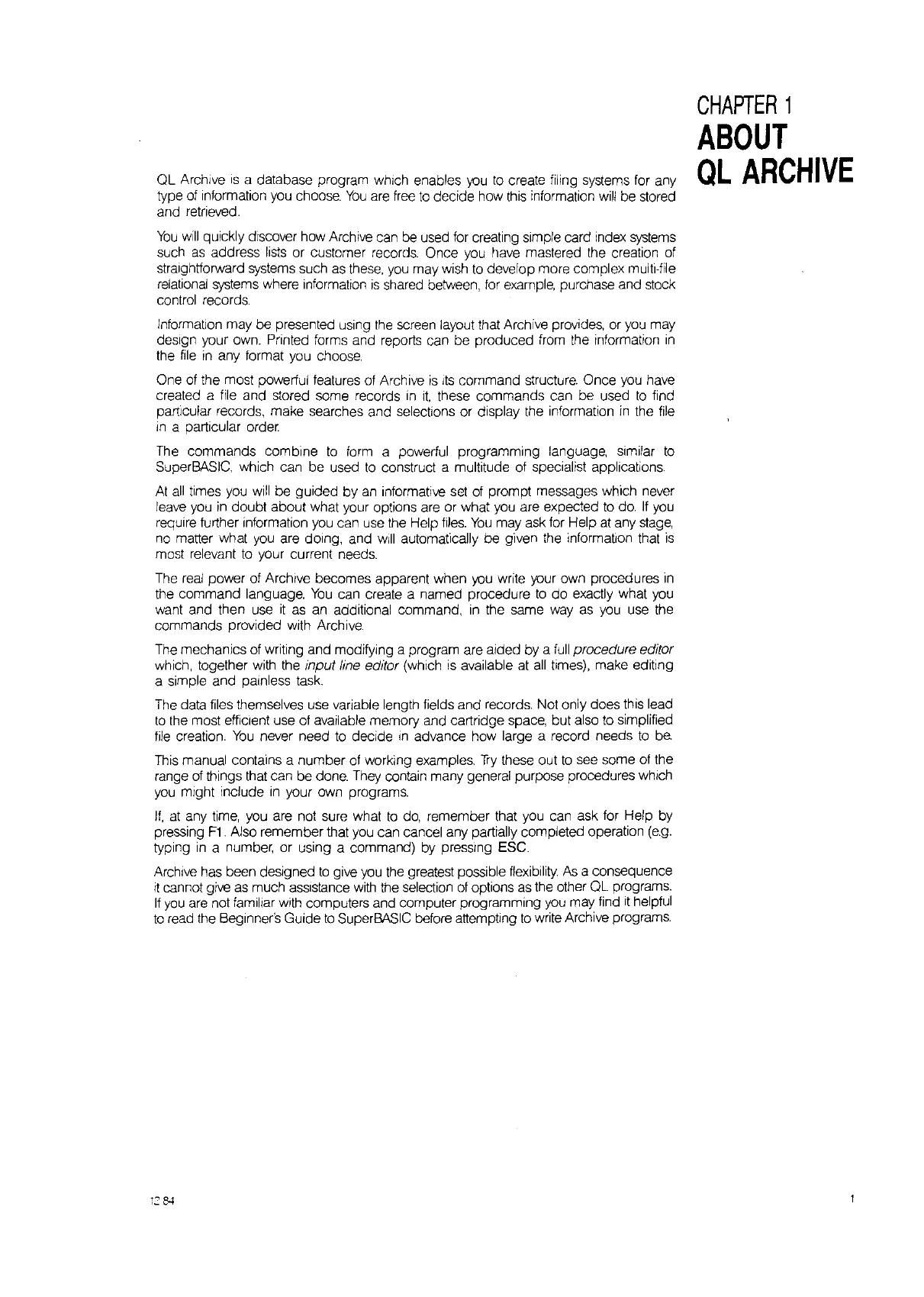OL Archive
is
a database program which enables
you
to
create filing systems for any
type of information you choose.
You
are
free
to
decide how this information
will
be stored
and retrieved.
You
will
quickly discover how Archive can be used for creating simple card index systems
such
as
address
lists
or customer records. Once you have mastered the creation of
stralghrtorward systems such
as
these, you may wish
to
develop more complex
multi-fHe
relational systems where information
is
shared between, for example, purchase and stock
control records.
Information may be presented using
the
screen layout that Archive provides, or you may
deSign your own. Printed forms and reports can be produced from the information
in
the
file
in
any format you choose.
One of the most powerful features of Archive
is
ItS
command structure. Once you have
created a file and stored some records
in
11,
these commands can be used
to
find
particular records, make searches and selections or display the information
in
the file
In
a particular
order.
The commands combine
to
form a powerful programming language, similar
to
Super
BASIC,
which can be used
to
construct a multitude of specialist applications.
At
all
times you
will
be guided by an informative set
of
prompt messages which never
leave you
in
doubt about what your options are or what you are expected
to
do.
If
you
require further information you can use the Help
files.
You
may ask for Help
at
any
stage,
no
matter what you are dOing, and
will
automatically be given the Information that
is
most relevant
to
your current needs.
The
real
power of Archive becomes apparent when
you
write your own procedures in
the command language.
You
can create a named procedure
to
do
exactly what you
want and then use
it
as
an additional command,
in
the same
way
as you use the
commands provided
With
Archive.
The mechanics of writing and modifying a program are aided by a
full
procedure editor
which, together with the input line editor (which
is
available at all times), make editing
a simple and painless task.
The
data files themselves use variable length fields and records. Not only does this lead
to
the most effiCient use of available memory and cartridge space, but also
to
simplified
file creation.
You
never need
to
decide
In
advance how large a record needs
to
be.
This manual contains a number of working examples.
Try
these out
to
see some of the
range
of
things that can be done. They contain many general purpose procedures which
you
might include
in
your own programs.
If,
at
any
time,
you are not sure what
to
do, remember that you can ask for Help by
pressing
F1.
Also remember that you can cancel any partially completed operation
(e.g.
typing
in
a number, or using a command) by pressing ESC.
Archive has been deSigned
to
give you the greatest possible
ftexibility.
As
a consequence
it
cannot give as much assistance
with
the selection
of
options as the other OL programs.
If
you
are not familiar with computers and computer programming you may find
it
helpful
to
read the Beginner's Guide
to
SuperBASIC before attempting
to
write Archive programs.
1284
CHAPTER
1
ABOUT
QL
ARCHIVE

